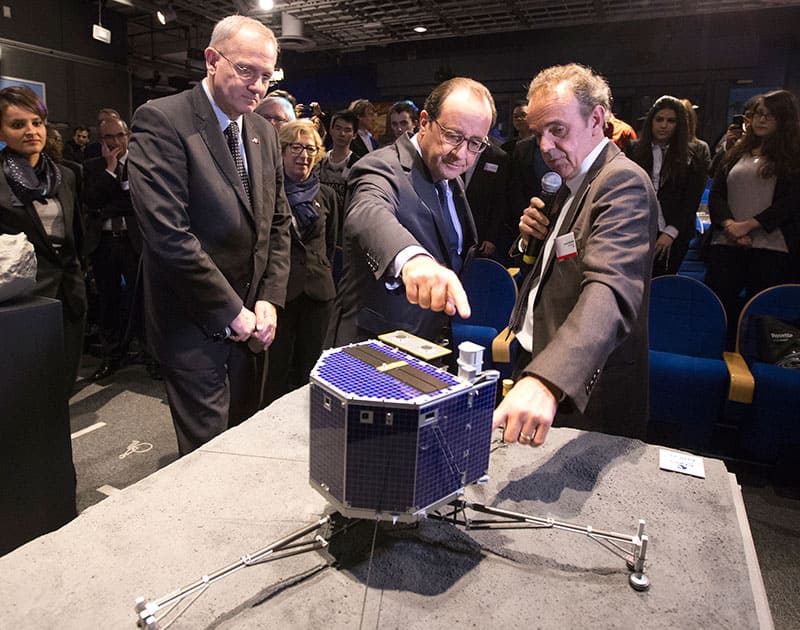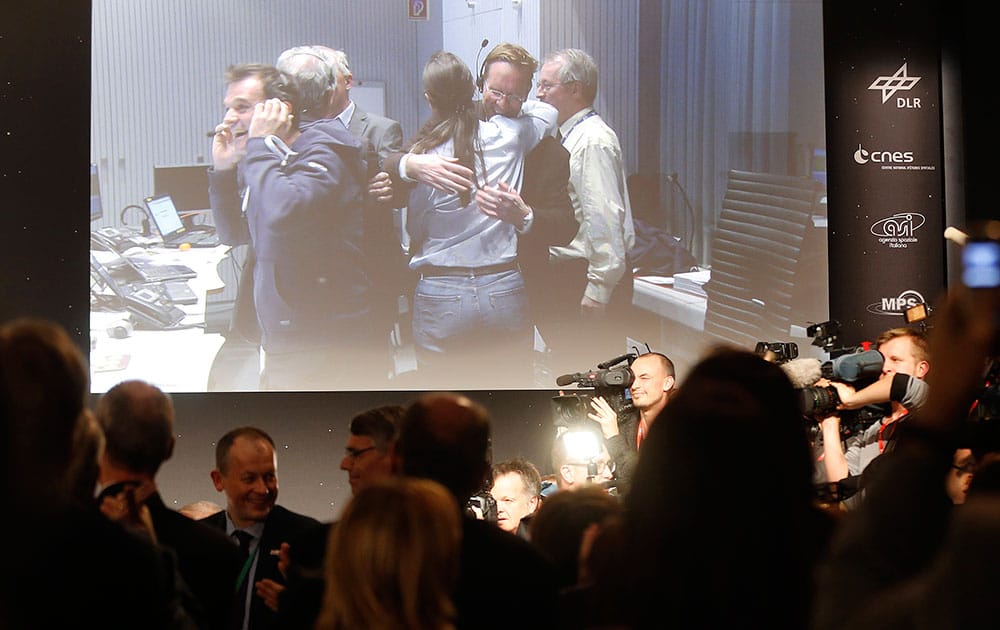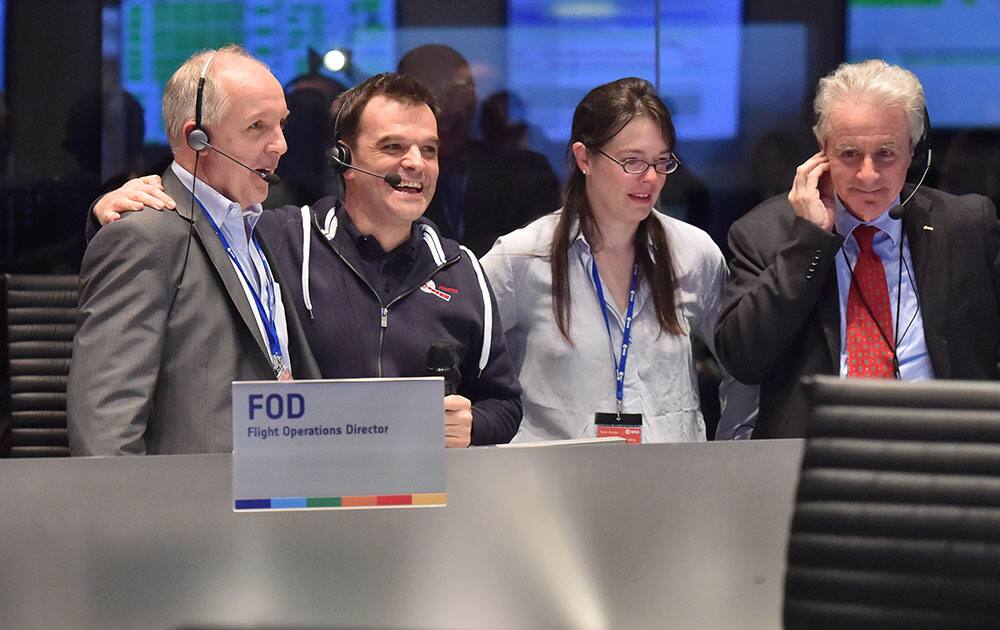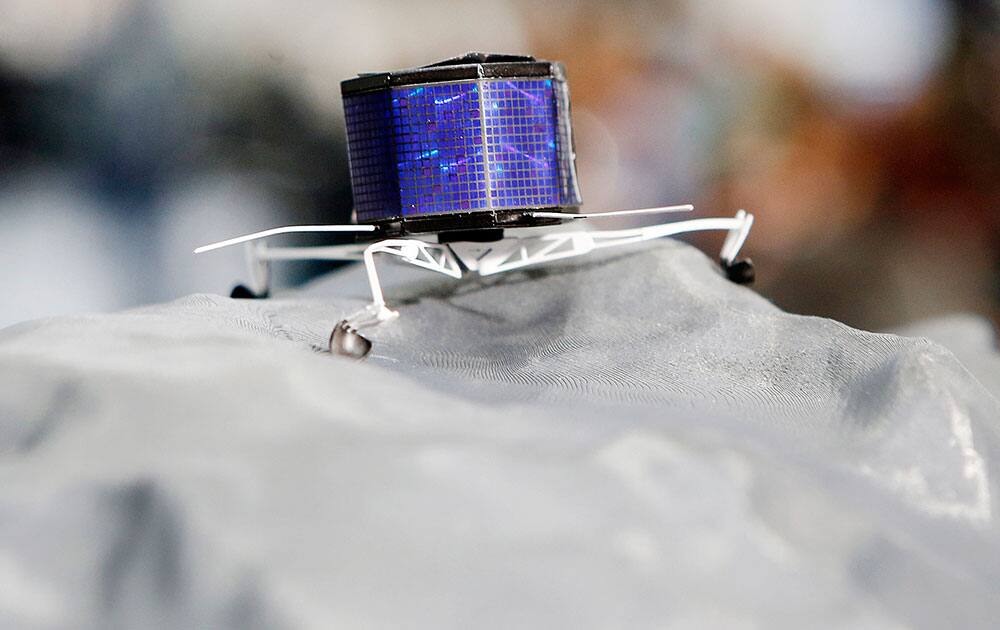1/10

French Education Minister Najat Vallaud-Belkacem, French National Centre for Space Studies (CNES) president Jean-Yves Le Gall, French President Francois Hollande with French astrophysicist Francis Rocard look at a model of Rosetta lander Philae as they visit the Cite des Sciences at La Villette during a broadcast of the Rosetta mission as it orbits around comet 67/P Churyumov-Gersimenko in Paris.
2/10

3/10

4/10

5/10

6/10

7/10

8/10

French National Centre for Space Studies (CNES) president Jean-Yves Le Gall, left, French President Francois Hollande, center, and former French minister and astronaut Claudie Haignere, right, wear 3D glasses as they visit the Cite des Sciences at La Villette during a broadcast of the Rosetta mission as it orbits around comet 67/P Churyumov-Gersimenko in Paris.
9/10

10/10

















